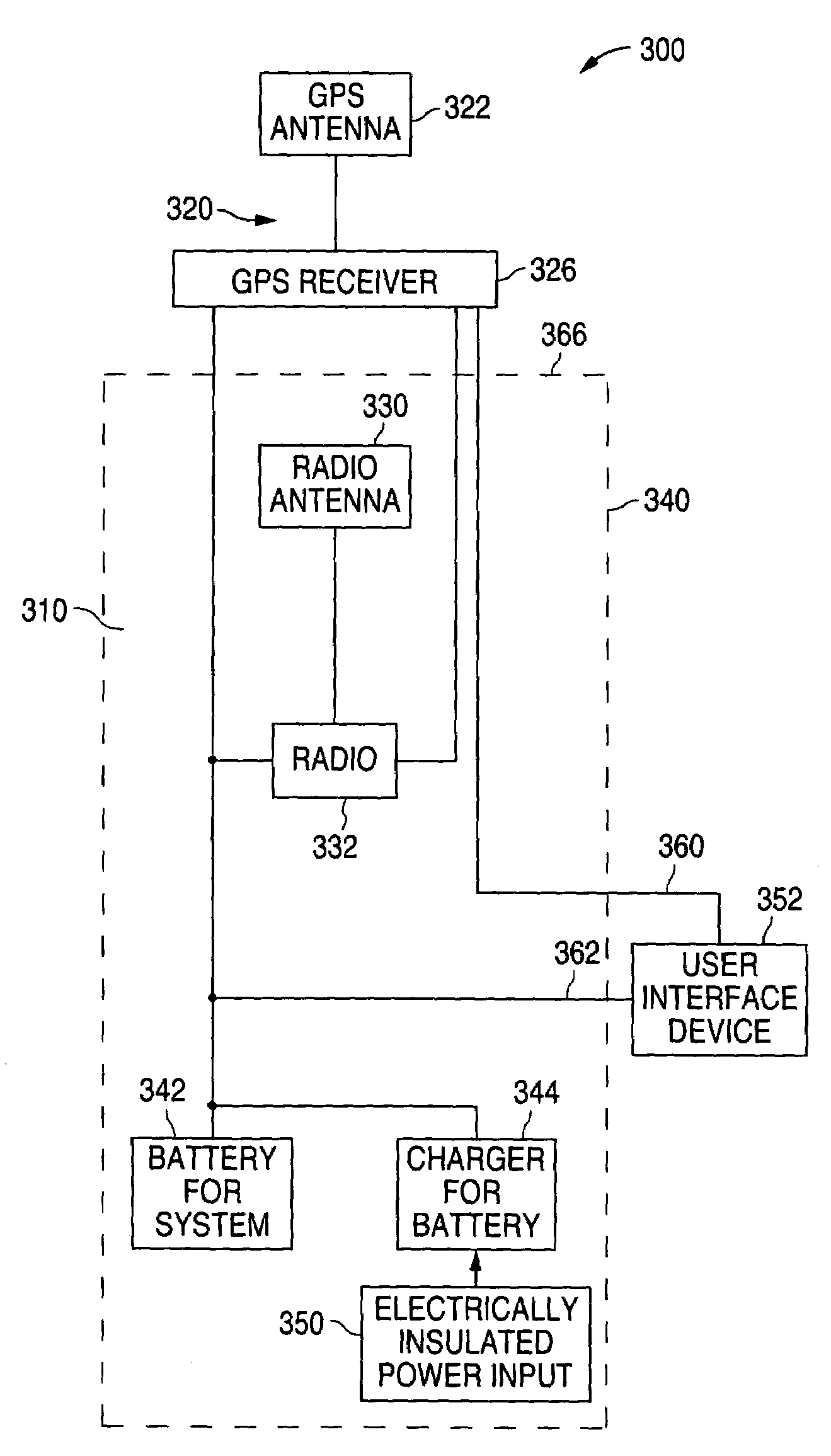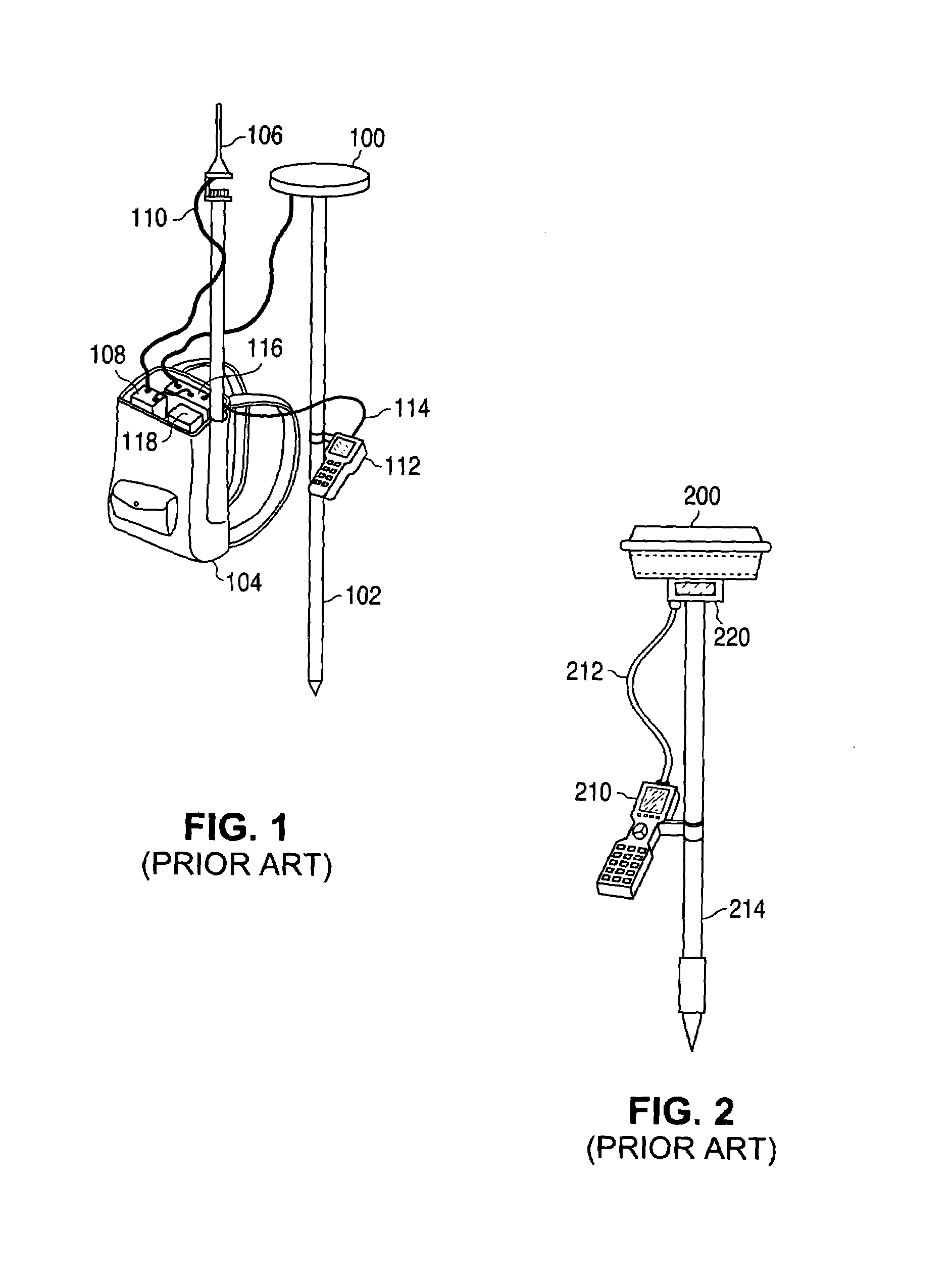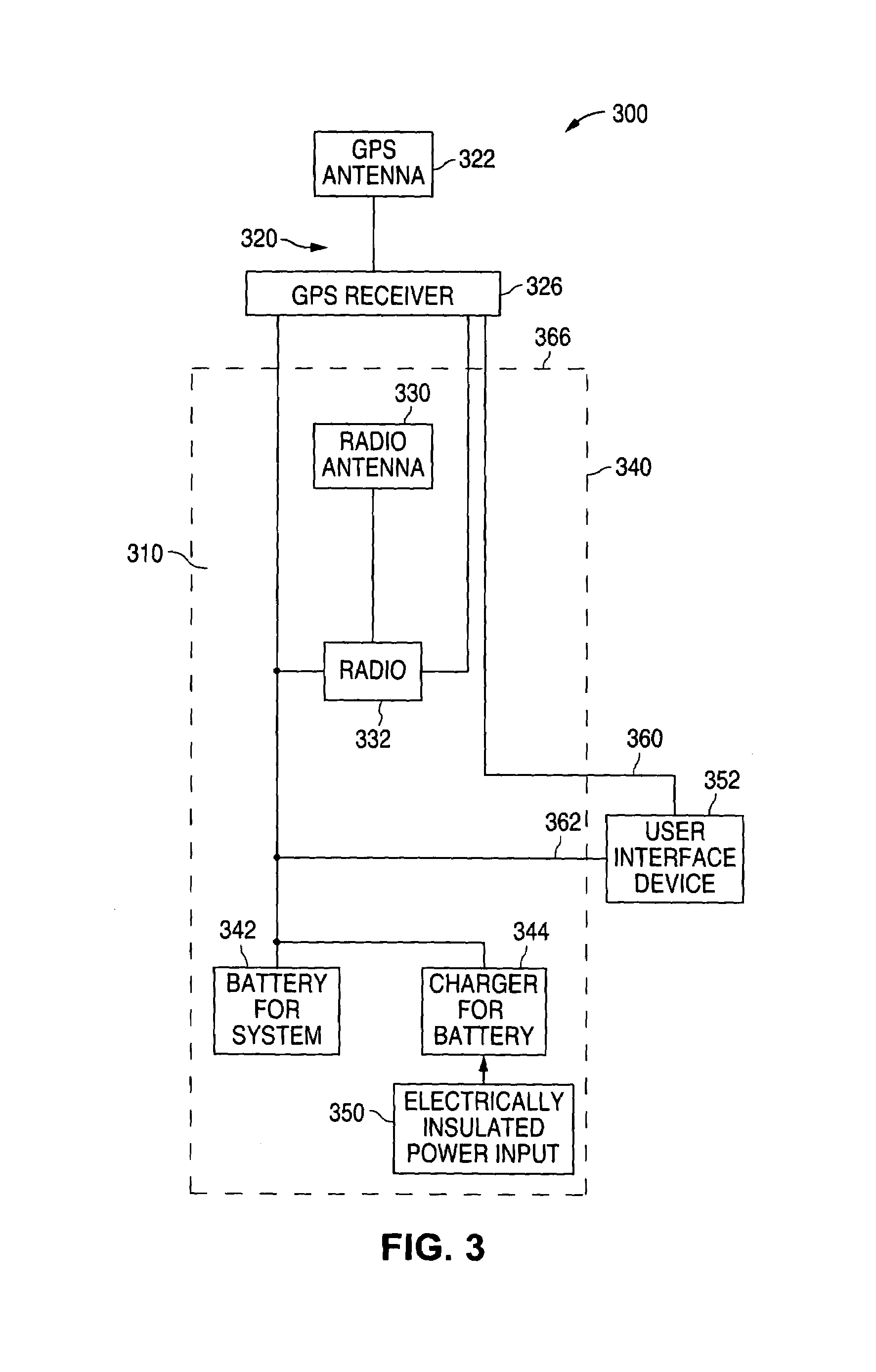Location identifying apparatus and method of identifying the location of a user
- Summary
- Abstract
- Description
- Claims
- Application Information
AI Technical Summary
Benefits of technology
Problems solved by technology
Method used
Image
Examples
Embodiment Construction
[0032]FIG. 3 is a block diagram, and FIG. 4 is a three dimensional view of one embodiment of a rover or mobile station of a differential global positioning system (DGPS) of the invention. The mobile station 300 comprises two major systems: a radio or wireless data link system 310 and a Global Positioning System (GPS) 320. The GPS 320 receives GPS signals from a satellite by means of a GPS antenna 322 connected to a GPS receiver 326. This information is corrected using differential correction data received from a base station (not shown) by means of a radio antenna 330 connected to a radio receiver or transceiver 332. For ease of reference, the same reference numerals are used as far as possible in the physical depiction of FIG. 4.
[0033]In accordance with one embodiment of the invention, the radio system 310 with its radio receiver or transceiver 332 and radio antenna, is housed within a tubular survey pole 340. In this embodiment, the power supply for the systems 310, 320 takes the ...
PUM
 Login to View More
Login to View More Abstract
Description
Claims
Application Information
 Login to View More
Login to View More - R&D
- Intellectual Property
- Life Sciences
- Materials
- Tech Scout
- Unparalleled Data Quality
- Higher Quality Content
- 60% Fewer Hallucinations
Browse by: Latest US Patents, China's latest patents, Technical Efficacy Thesaurus, Application Domain, Technology Topic, Popular Technical Reports.
© 2025 PatSnap. All rights reserved.Legal|Privacy policy|Modern Slavery Act Transparency Statement|Sitemap|About US| Contact US: help@patsnap.com



